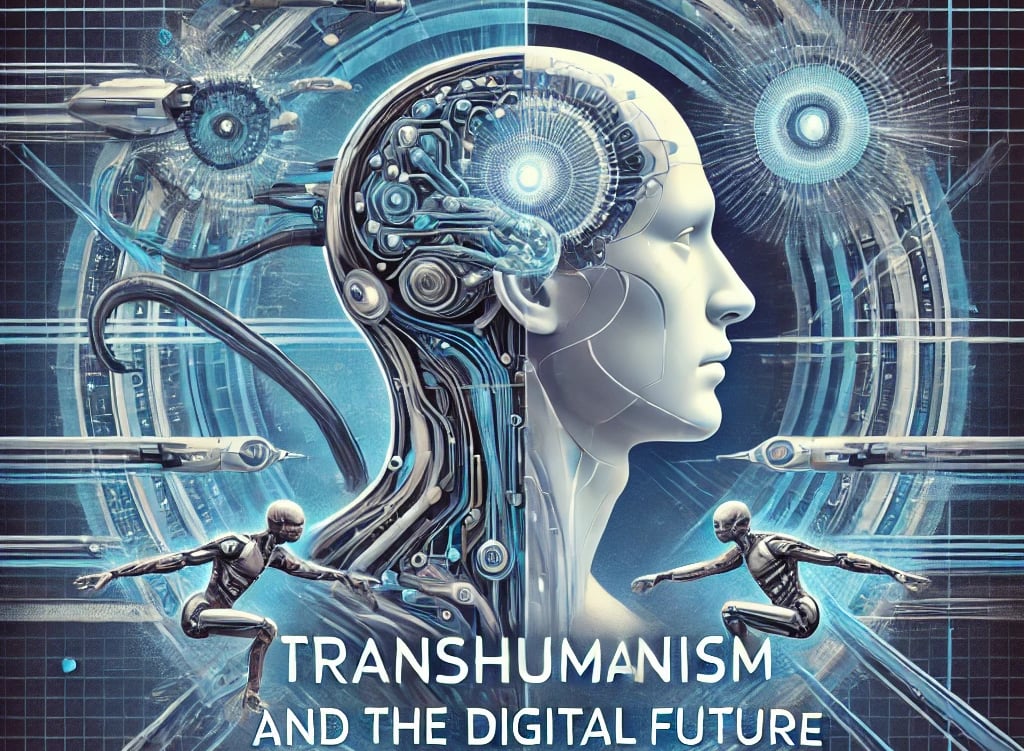Transhumanism and the Digital Future: Towards a Human–Machine Fusion?
DIGITAL CULTURE AND PHILOSOPHY


Transhumanism and the Digital Future: Towards a Human–Machine Fusion?
Transhumanism is both a movement and a school of thought that explores the idea of using technology to transcend human biological limits. At its core is the belief that humanity is in a transitional phase and can evolve—going “beyond human”—by drastically enhancing physical and cognitive capabilities through science and technology. This includes scenarios such as integrating cybernetic implants into the body (from augmented reality directly into the retina to exoskeletons that boost strength), genetic engineering to eliminate hereditary diseases and enhance traits, and even the possibility of uploading the mind onto digital platforms in the distant future.
Philosophically, transhumanism challenges fundamental concepts such as identity, mortality, and even the definition of “human.” One corollary is the theory of technological singularity, often associated with futurist Ray Kurzweil. Kurzweil predicts that around 2045, artificial intelligence will far surpass human intelligence and begin self‑improving at an exponential rate. At that point, the distinction between human and AI may blur: thanks to nanorobots in our bodies and brains, we could merge with technology and dramatically amplify our cognitive abilities.
Another advanced aspect is radical longevity. Transhumanists aim to defeat aging as if it were a disease. Technologies such as gene therapy, CRISPR gene editing, and artificial organs might, according to some scientists, extend human life well beyond 120 years—or even indefinitely through continuous repair and replacement of body parts (the concept of “Longevity Escape Velocity” as proposed by Aubrey de Grey). Laboratory experiments on cellular rejuvenation and tissue repair, along with cryopreservation (post‑mortem suspension in anticipation of future cures), are already underway at institutions like Alcor.
Clearly, these advancements raise enormous ethical and social questions. Proponents envision a future where we live longer, healthier, and smarter—free from diseases and the limitations of aging, with enhanced mental capabilities such as improved memory and direct brain–cloud connectivity. Critics, however, worry about the loss of what makes us human. What happens to personal identity if we begin implanting chips in our brains to boost memory? Do we remain ourselves, or do we become “others”? Moreover, a society where only some can afford enhancements risks widening inequalities—a “augmented elite” versus natural humans left behind.
There is also the concern of autonomy and control. If we delegate vital functions to AI or robotic prostheses, how do we ensure they do not begin to control us? For example, Elon Musk’s Neuralink is developing brain–computer interfaces that could theoretically enable telepathic communication or mind‑controlled devices—but they might also open the door to thought hacking or manipulation. Legislators and bioethicists are already debating “cognitive rights” to prevent abuses, such as the right to mental privacy and protection against non‑consensual alterations of one’s thought processes.
Philosophically, transhumanism connects with post‑human concepts. Thinkers like Donna Haraway (famous for her “Cyborg Manifesto”) already in the 1980s envisioned cyborgs as metaphors for fluid identities. Today, these reflections become tangible. Some even speak of evolving into a new species—Homo Technologicus—where organic and artificial merge. Others, like philosopher Nick Bostrom, caution about existential risks: an uncontrolled superintelligent AI might even pose a threat to human survival (the “Paperclip Maximizer” scenario).
In conclusion, transhumanism and the drive toward a digitally enhanced future represent a crossroads between cutting‑edge technology and age‑old questions about the meaning of life and the human condition. We face extraordinary possibilities—curing diseases, expanding the mind, and defying death—but each step must be carefully weighed. “With great power comes great responsibility,” as Spider‑Man’s uncle famously said—never has this adage been more relevant. The fusion of human and machine might usher in a new Renaissance or lead to unprecedented ethical dilemmas. The challenge for philosophers, scientists, and society will be to steer this evolution in an inclusive and safe direction, ensuring that a transhuman future, if it comes, benefits everyone without losing our essential humanity.
Bibliography:
Tomorrow Bio – “Il transumanesimo: convergenza tra uomo e tecnologia” (2023).
Popular Mechanics – “Singularity by 2045” (2024).
Tomorrow Bio – “Implicazioni etiche del transumanesimo” (2023).
MIT Tech Review – “When Machines Merge with Humans” (2022).
Bostrom, N. – “Superintelligence” (2014, Oxford Univ. Press).